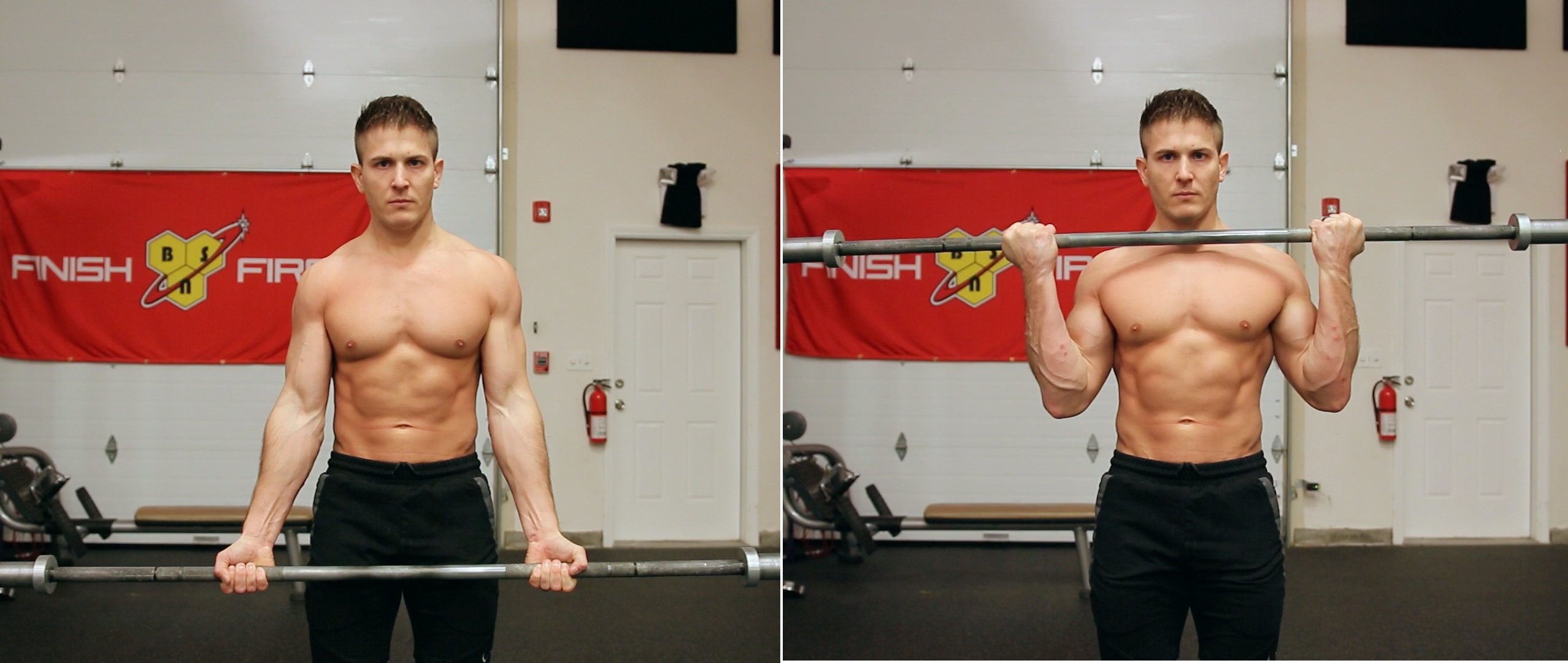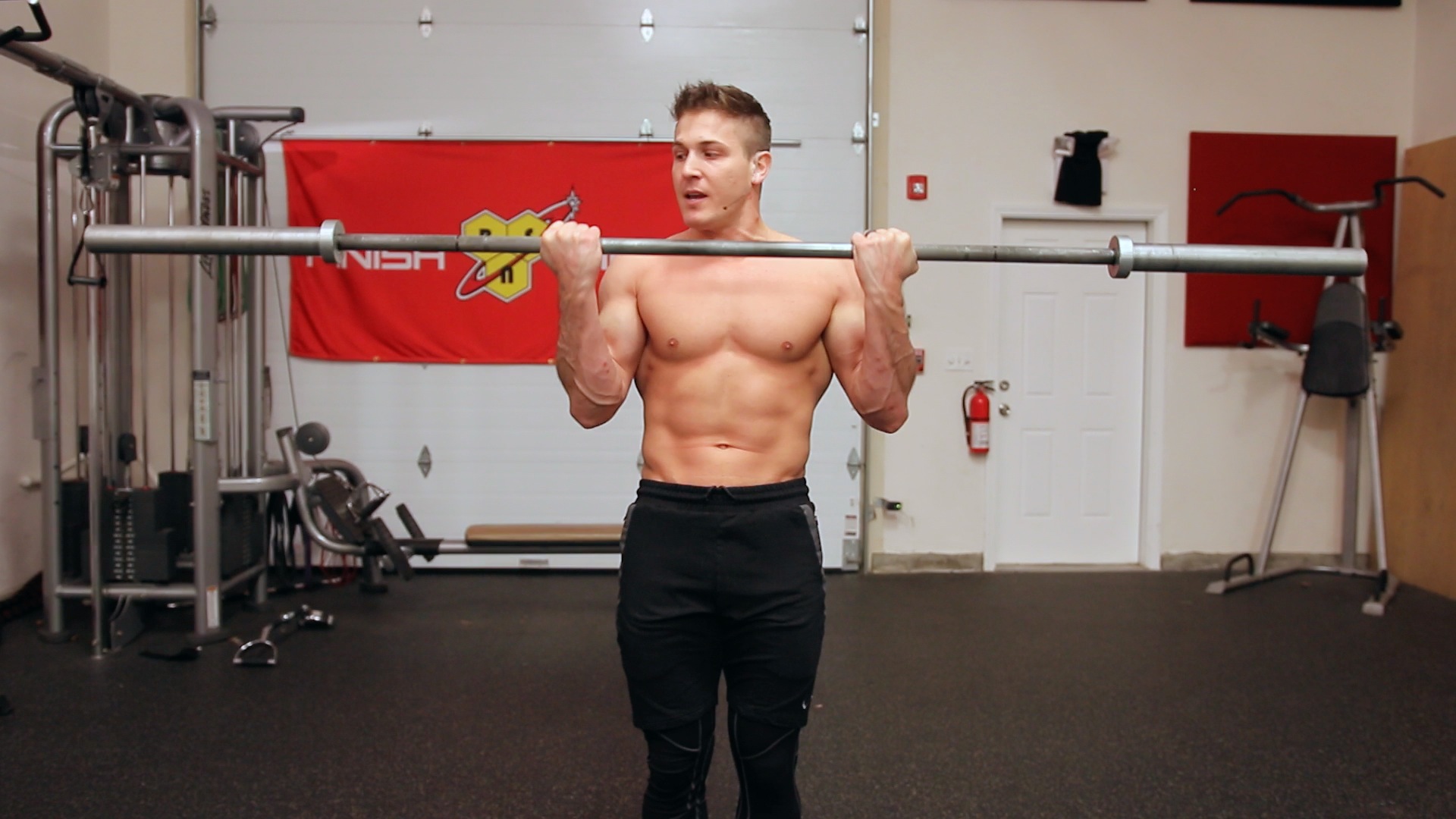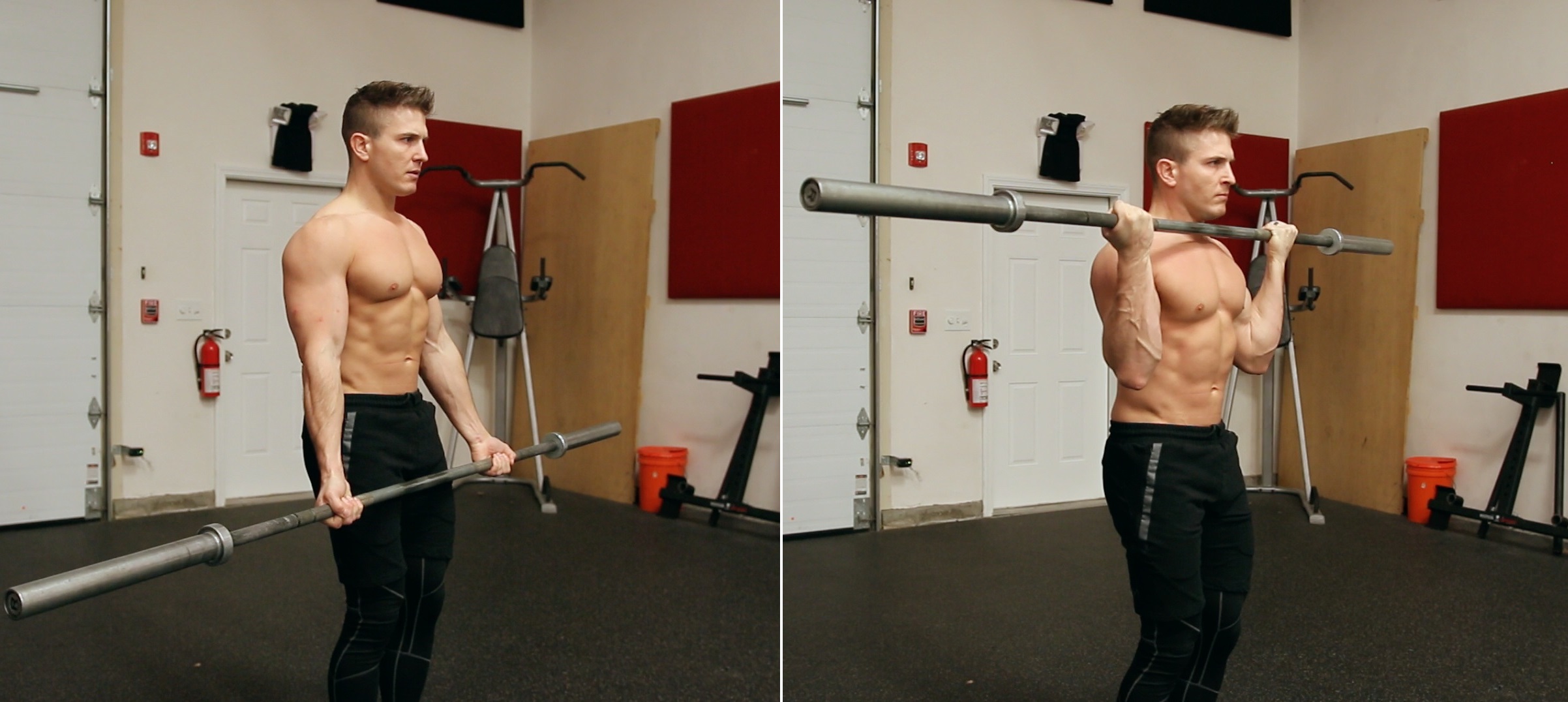How To: Barbell Bicep Curl
3 Golden Rules
Today we’re going to be going over proper form for a barbell biceps curl. Before we get into the 3 golden rules, I just want to do a quick form check so you know what proper form looks like.
Proper Form: Barbell Bicep Curl
You can utilize this exercise to target the inner or outer heads a bit more. For example, if you want to place more emphasis on the inner head (short head), you would do a really wide grip. If you wanted to place more emphasis on the outer head (long head) of the biceps, you’d grab with a closer grip. What I want you to focus on, however, is trying to hit both heads equally by using a nice neutral grip so your arms are about shoulder width apart.

To perform the movement, all you’re going to do is bring your arms slightly forward, and make sure your arms are fully locked out. One of the easiest ways to know you did a bicep curl with full range of motion is at the bottom of the movement, you flex your triceps. Once your triceps are flexed, you’re going to bring the weight up, curl all the way to the top, squeeze and flex those biceps as hard as you can, then slowly control and return to the starting position, flexing those triceps, and repeat for reps.
#1: Always Use A Straight Barbell
What should you use, a straight bar, or an E-Z curl bar? Let’s start by looking at the E-Z curl bar. There’s actually two functions of your biceps, one of those functions is obviously to flex the arm, and the other function is to supinate the forearm. What happens when you use an E-Z curl bar? The reason why it makes the curl easier is because it places a little less tension on your wrists, and when you grab the inside handles you’ll notice that instead of your hand being totally straight, it’s turned in slightly. What does that mean in terms of biceps activation? Technically you’re still supinating your forearm, but you’re not supinating it all the way out. Obviously you’ll get some flexion in the biceps when you curl, there is a bit of supination happening at the top, but you’re not able to maximize it.

If you have good flexibility and it doesn’t bother you to use a straight bar, then that’s what you want to do. When possible, use a straight bar to maximize both the flexion of the biceps, as well as the supinating your forearm out as much as you can.

#2: Always Keep Tension On The Biceps
This means you never want to let your arms hang fully down by your side during your repetitions. Gravity does play a factor when doing bicep curls if you want to keep tension on your biceps. However, what most people do to try to compensate for this is they do half reps. Obviously if you’re doing a half rep, you’re not working your biceps through the entire range of motion, which can also create weakness over time. You don’t want that, you want to build your biceps as big and as massive as possible, and utilize every single repetition to do that.

The fix is actually easier than you think. When doing your curls, when you get to the bottom of the movement, instead of hanging your arms down by your sides, what you’re going to do is keep your elbows slightly in front of your hips. This slight change in angle from being straight down to being about an inch or two in front of your hips is going to place a great deal of tension on your biceps, even when your arm is fully extended at the bottom of the movement. If you’re able to maintain that as you do all your repetitions, you’re going to be keeping constant tension on your biceps and see much faster gains.
#3: Don’t Be Afraid To Use Momentum
Obviously as a beginner, you probably shouldn’t be using any momentum. You should be utilizing weight that you can handle for all of your repetitions. If you’re doing 8 repetitions, you should be able to go all the way up and all the way down with good form for all 8 reps. But as you become more advanced and you’re able to push your body a bit harder and your mind-muscle connection is much stronger, you should be able to utilize a technique like momentum to squeeze out a few extra reps.

For example, let’s say you’re trying to do 8 repetitions. You don’t want to use momentum on all of your reps, maybe the last 2-3 max. So let’s say you do your reps, and by the time you get to the 6th rep you’re struggling and you barely get that 6th rep. When you get back to the bottom of the movement, just sit back a little bit and use a little bit of momentum to bring the weight up, reset your form, and then fight the negative on those last few reps. Remember, you always get the most muscle damage for re-growth during the negative portion of the movement. If you’re using a bit of momentum to skip the concentric portion (the way up), it’s not going to be detrimental to your gains because you’re still taking advantage of the most important part of a rep.
Just make sure though, if you do use momentum, it is IMPERATIVE that when you do it, once you get to the top of the movement, don’t just drop the weight. Get it to the top, then take a second to control, flex your core, and really focus on controlling the negative.
Conclusion
I know a lot of you have been looking for the basics for building big arms, and while the triceps makes up the majority of your arm, it’s still nice to have those beefy biceps popping too. Utilizing these 3 golden rules will help take your biceps from average to awesome in no time!








